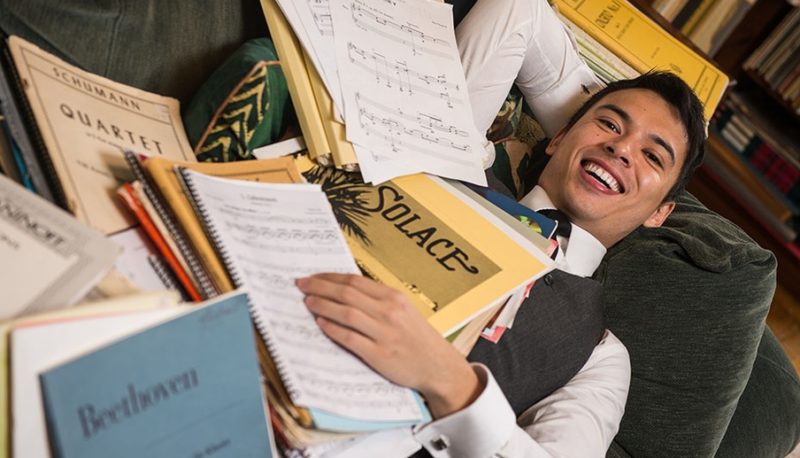
One musician. Two pianos. A musical showdown between past and present.
Although this sounds like the beginning of an artistic boxing match, the setup for “Piano vs. Piano” on Sunday at the MATCH with keyboard virtuoso Christopher McKiggan at the helm isn’t meant to be a competition to the tuneful death. Instead, it’s an opportunity to discover how sound has changed over the years through the development of the piano — particularly, two stunning Steinway instruments.
What are the differences? And does McKiggan have a preference? Read on for our conversation with the soloist ahead of the program.
Q: What are some physical differences between a piano of yesteryear and a piano today?
Christopher McKiggan: Firstly, the shape of the pianos of yesteryear weren’t as standardized as they are today. The 1860s Steinway piano that I’ll be performing on Sunday is more narrow and long and shaped a bit like a harpsichord. Also, the number of keys on the piano were less than the current standardized 88 keys, with the 1860s piano having only 85 keys.
Q: How does that impact how it feels when playing? Do you have to play differently?
CM: Generally the biggest impact on how I play is the sound that the instrument produces. The sound has a much more mellow quality to it on the old piano. Particularly in the upper and lower ranges the sounds are more muted. This is all due to the color of the sounds on the instrument. Modern pianos have a much more unified sound for note to note, while each note on the 1860s piano has a different color to it. Therefore, one can produce some rather wonderful colors at the 1860s piano provided that the performer truly carefully voices each note.
Q: Thoughts: Would composers such as Brahms, Tchaikovsky and Liszt like today’s instruments?
CM: I think they would. But they would have loved their current instrument too. Would they have composed differently if they had the modern day pianos? Perhaps. I truly feel that the more tools given to the composers, they would experiment with the colors and integrate them into their music. And the modern piano is certainly a different color to the old pianos. But, neither one is lesser than the other.
Q: Do you have a preference?
CM: From a purely technical standpoint, the modern pianos for sure. But as mentioned above, color wise, both pianos have their upsides.
Q: When would you choose one over the other?
CM: If I was performing in a big concert hall, I would choose a modern grand for sure. But in more intimate settings, if I could and had the option more often, I actually might jump back and forth between the two pianos during a concert and give some more piano vs piano action!
___
The River Oaks Chamber Orchestra Unchambered Series presents Piano vs. Piano on Sunday, Feb. 28, at 5 pm at The MATCH. Tickets are $25 general admission, $15 students, and can be purchased online.

Leave A Reply